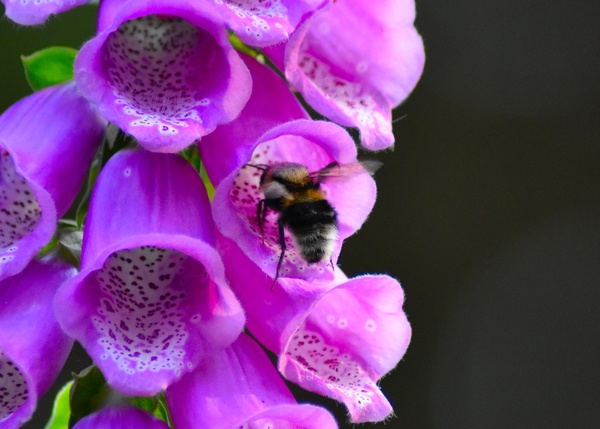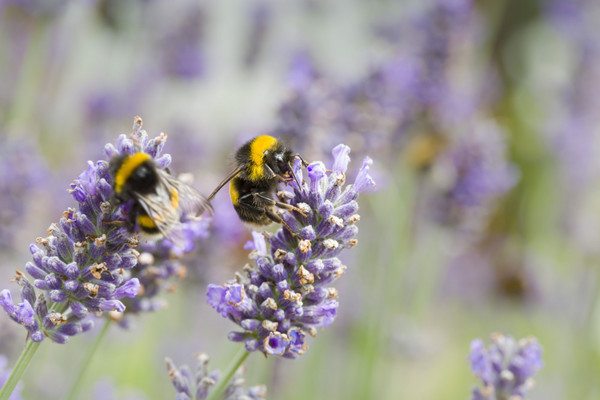There are many great options when it comes to bee-loving plants in the UK. Wherever you are in the world, there are many benefits to attracting bees to your garden.
Surely we’ve all heard people raving about certain plants because “The bees just seem to love it!”. You might have already managed to attract some bees to your garden. Did you notice which plants they like?
But what is all this fuss about bees – and other so-called pollinators for that matter?
What’s so great about bees?
Bees are vitally important to the successful pollination of many flowering plants and trees. By carrying pollen from flower to flower, they’re an integral part of the natural life cycle, helping plants to grow, reproduce and even produce the food that we eat.
Did you know… bees pollinate around 80% of wildflowers in Europe?
Bees in your garden are essential to help maintain the healthy natural cycles required for growing flowers and fresh produce. Many fruits and vegetables simply won’t crop without the help of so-called pollinators.
Bees are fascinating creatures and it’s a truly rewarding feeling to see them visiting the plants you’ve provided for them. There are many types to look out for, and if you’d like to know more about what to look out for then check out the Friends of the Earth Bee Guide here: https://friendsoftheearth.uk/nature/bee-identification-guide
Planting Ideas to Attract Bees to Your Garden
Many plants and flowers will attract bees, but some, in particular, are simply iirresistible. Most of us will know that it’s the pollen and nectar at the centre of the flowers that they’re really after. But why are some more attractive than others?
Let’s look at some things that make a flower more ‘bee friendly’…
Did You Know… Bees Love Purple?
It’s thought that bees see colour in the purple-to-blue range the most clearly, and perhaps this is why they’re often drawn to flowers of those colours.
Lavender, Catmint and Budleja are all great examples of this.
I’ve also managed to grow Echiums in the past and noticed that their pinky, purple flowers are covered in bees for the entire summer. Viper’s Bugloss is a perfect native variety, but for a real wow factor, try the Giant version, originating from the Canary Islands.
You might also have success with things like blue Cornflowers and Cranesbill Geraniums or pink / purple Sedums.
Choose Single Flowers (Not Double)
This relates to the number of petals that a flower has. It seems the exact difference between a single flower and a double flower is not universally agreed. However, as a general rule of thumb you can assume that a flower with around 4 to 8 petals would be considered single (good) and more than that – particularly more than 15 is a double (not so good).
The main reason behind this is that double flowers can make it more difficult for bees to get access to the centre – where the nectar and pollen are.
Look for Bell-Shaped Flowers
As we mentioned above, getting access to the centre of the fllower is important for bees, so that they can easily collect the nectar and pollen they need. To help with this, you might choose tubular, bell-shaped flowers, which provide an easy landing station, where bees can safely park in comfort. It’s fun and rewarding to watch bees go from flower to flower, climbing right inside the tubular petal shapes and emerging a few seconds later.
Good examples for bee friendly, bell-shaped flowers would be Bluebells, Foxgloves, Snapdragons and Hellebores.

Plan for Year-Round Blooms
While some flowers will last all summer, it’s also worth trying to fill in the gaps where you can. It’s thought that some bees can only survive for 24 hours wthout nectar. Therefore it’s really important to keep a constant supply going once they come out from hibernatiion.
By strategically planting bulbs early on and then adding seeds or seedlings later on, you can keep your bee visitors coming back all year round.
Check flowering times on seed and bulb packets and plan out your flowers for the year. You can actually start this process in the autumn, when panting spring bulbs for the following year.
You might even provide blooms throught the colder months – sometimes bees will actually form a winter colony or emerge from hibernation early. For the winter months, some varieties of Clematis would do nicely, or look for winter-flowering honeysuckle and primroses.
Bee-Friendly Flowers List
We’ve mentioned a few plants above and there are many more to choose from. For easy reference, here is a shortlist of some great bee friendly plants for you to try throughout the year…
Flowers from Spring Onwards
Summer to Autumn Flowering
Fox Gloves (Digitalis)
Snap Dragons (Antirrhinum)
Winter Flowering
Clematis (evergreen varieties)
Other Ways to Attract Pollinators
Besides bee-friendly plants, there are a few other things you can do to attract more pollinators. Here are a few extra tips…
- Plant night-scented flowers to attract moths after dark
- Grow plants in groups, so that the colour and scent are easy for bees to find
- Bees need water to survive. Without it, they would perish. Interestingly, bees are attracted to water sources that are close to where they live. So, consider leaving a little bowl of water out, or even add a small wildlife pond or water feature.
- Plant flowering herbs such as lavender, rosemary, and thyme which are not only great for bees but also add some lovely fragrance to your garden.
- Building a wildlife garden is a great way to attract birds, bees, and other animals to your yard. Plus, it’s a fun project that the whole family can enjoy.
- Build a bee house in your garden and help our little pollinators out! By providing them with a safe place to live, you’ll be doing your part to keep the ecosystem healthy and buzzing.
- Choose mostly native plants if you can. They’re better for the local ecosystem and more likely to be recognised by bees and pollinators.

Final thoughts
Hopefully you’ve enjoyed learning about how to grow a bee-friendly garden! Really, anyone should be able to enjoy bees and other pollinators in their outdoor space – even if you only have a small yard or balcony. There are plenty of bee-friendly plants that will grow well in containers, and you’ll be doing your part to help nature at the same time.
If you have any tips of your own, be sure to share them in the comments below. Which plants have got your bees going wild? We’d love to hear about your bee-friendly garden!






















